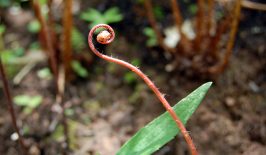Thanks to a certain cartoon sailor, spinach has long been seen as a vegetable possessing incredible properties. And indeed, spinach is a great source of key vitamins and minerals. However, it now seems like its significance for human life doesn’t end there. Engineers at the Massachusetts Institute of Technology have discovered the venerable leafy green can also make a great environmental researcher, and are even able to email their findings to human colleagues.
The breakthrough took place within MIT’s Department of Chemical Engineering and is part of a wider series of experiments being developed in the field of plant nanobionics. This branch of research aims to embed non-native functions into plant life via nanoparticle technology. This essentially allows for the natural functions of plants to be used as the basis for new technologies.
Within the MIT study, published in the Nature Minerals journal, spinach was used as the basis for nitroaromatic sensors. In layman’s terms, this means using the advanced root systems of spinach to assess the quality of soil and detect nitro compounds – organic structures which often form the basis of explosives.
To do this, plants were augmented with near infra-red fluorescent nanosenors, known as single-walled carbon nanotubes (SWCNTs). These were implanted in the leaf’s inner tissue and function with certain peptides – chains of amino acids – to recognise nitroaromatics. As the nitroaromatic contaminants are transported through the plant’s root system and into the leaves, they cause fluctuations in the infrared emission intensity of the plant. These can then be automatically detected by infrared camera platforms which can send the information to researchers via email.
From spinach-powered sensors to spinach-powered cars
Although the experiment was originally developed with the goal of detecting explosives like landmines, the system could also be employed to detect a series of chemicals that indicate environmental issues that are a cause for concern. Plants are naturally highly environmentally responsive and consistently absorb vast amounts of data from their surroundings, including pollutants in the soil or air. In some cases, they can even make predictive assessments based on minor ecological changes, such as predicting droughts long before they occur.
It is hoped that if researchers can further tap into the chemical signalling pathways within plant life, plants such as spinach could be able to monitor environmental factors in a whole range of different ways, ultimately taking on the role currently occupied by electronic environmental sensors.
However, the possible future applications of spinach don’t end there. Researchers from the American University in Washington DC have also used spinach as the basis for experiments into high performance catalysts. The team discovered that when spinach leaves had been juiced and ground into a powder, it could be turned into nanosheets for use in metal-air batteries. These batteries are generally seen as more efficient than the lithium-ion batteries that are commonly used in smartphones and electric vehicles. Indeed, due to the high levels of iron and nitrogen in spinach, it has been suggested that spinach-based catalysts may be able to outperform traditional platinum catalysts, greatly reducing their costs. More efficient batteries would of course, overall, affect the amount of electricity consumed and have a positive environmental impact of their own.






